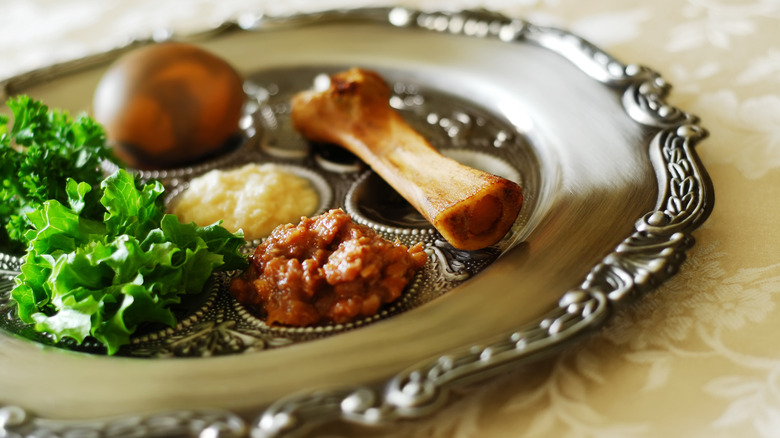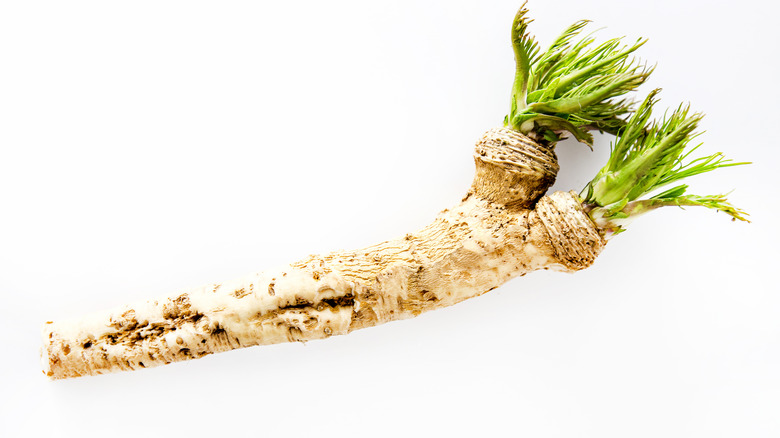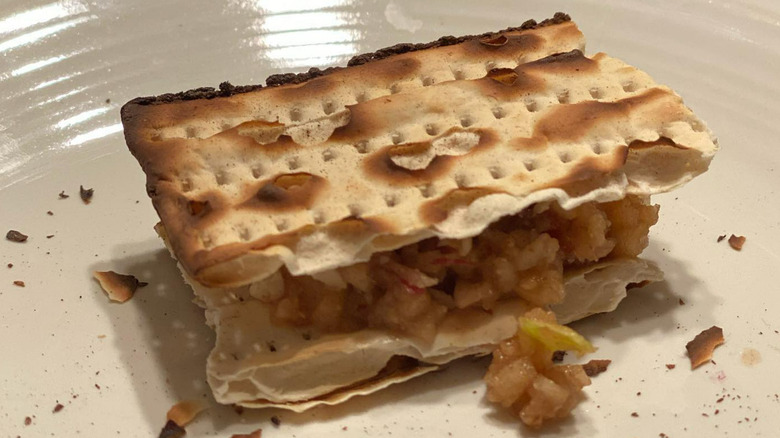Maror: The Bitter Herbs That Take Center Stage During Passover
Each spring, the eight-day Jewish holiday of Passover commemorates Jewish freedom from enslavement in ancient Egypt. Though only about 2.5% of American adults identify as Jewish, data compiled by Economist/YouGov suggest that as many as one in five Americans may participate in the holiday's celebration, which takes place in the form of a festive meal known as a "Seder" on one or both of the holiday's first two nights.
The Seder is far more than a meal, however. It tells the story that many people, Jewish or not, will recognize from the Old Testament's Book of Exodus, peaking with the parting of the Red Sea. The Seder's storytelling follows a formal structure designed to make the events feel as real and visceral as possible to all participants. That includes songs, readings, and prayer, but ultimately, what could possibly be more visceral than eating and drinking?
Accordingly, the Seder's proceedings are peppered with edible props, including the four cups of wine that all are obliged to drink, and a Seder plate holding six foods, each symbolizing some key aspect of the tale. At its centerpiece are the bitter herbs known for purposes of the Seder as "maror."
What does the maror symbolize, and what constitutes a bitter herb?
The term "bitter herbs" generally refers to bitter leafy greens. Bitter herbs make an appearance in Exodus when the night before the escape from Egypt, God commands the Jewish people to eat bitter herbs along with lamb and unleavened bread (which we now know as matzoh). The bitter herbs were included in that particular meal as a reminder of the life of bitterness that was about to be left behind. Some of the bitter herbs that would have been available in Egypt back then were watercress, dandelion, chicory, and various wild lettuces.
Jewish tradition has made room for any of these, and various others, to be used as edible props in the Seder's annual retelling of the story of Passover. But the most common bitter herbs used today are horseradish root and lettuce. Lettuce became the bitter herb of choice because it's said to hold both bitter and sweet flavors — and one can't know one without having experienced the other, per Chabad.
Lettuce hasn't always been readily available at Passover, however. So, horseradish, and more specifically, its bitter and acrid root, became a reliable stand-in. For use as "maror," fresh horseradish root is either cubed or sliced into smaller-than-bitesize pieces (a size no bigger than an M&M candy). Alternatively, many Seder tables feature jarred, prepared horseradish root (which is chopped and mixed with vinegar, sugar, salt, and sometimes dyed reddish purple using beet juice).
How are the bitter herbs eaten during the Passover Seder?
The maror, with its bitter symbolism, is so central to the annual retelling and "reliving" of the Passover story that forms the structure of the Seder that it appears in two places on the Seder Plate and is referenced twice during the proceedings, albeit for slightly different purposes. In many cases, one of the two is horseradish, and the other is lettuce. However, there's no Jewish law regarding that, and whoever is hosting the Seder can make that determination themselves.
The first time the maror is referenced and consumed during the Seder, it's specifically to bring to mind the bitterness of enslavement. Each participant is expected to take a portion and eat it in one bite, although they may mask the bitterness somewhat by dipping it in a fruit and nut paste known as charoset, which is also a prominent element on the Seder plate and symbolizes the stone-and-mortar construction work the Jews were required to perform as slaves.
The second time, mention is made of a rabbinical disagreement over whether maror was meant to be eaten straight up. In that case, the bitter herbs are eaten in the form of a matzoh sandwich, either with or without charoset, depending on family customs.
Your guide to storing the bitter herbs for maror
If you're planning on hosting a Passover Seder — especially if you're someone who likes to plan well in advance, you'll want to keep in mind that horseradish is far less perishable than lettuce. Indeed, whole horseradish root stays fresh in the pantry (or any dark, cool space) for up to two weeks and in the refrigerator for up to two months. Once you cut horseradish root, however, it will require refrigeration and will remain fresh for about one week.
When purchased from a retailer, jarred, prepared horseradish lasts even longer. Before it's opened, a jar may last up to two years. After it's opened, you'll still have up to three months to finish what's left. Other methods of storing horseradish for future use include making your own jarred horseradish preserve. Among the many ways that you can make use of your extra horseradish is this classic cocktail sauce recipe or a spicy enhancement to potato salad.
In the case of lettuce or other leafy greens that you may be planning to use as maror, your best bet is to hit the store no more than a week to 10 days before your Seder. That's how long lettuce will stay fresh in your refrigerator, with the caveat that whole heads of lettuce last longer in the fridge than lettuce that's been separated from its heart. Once you've washed and cut it, you'll want to use any leftovers within days.



